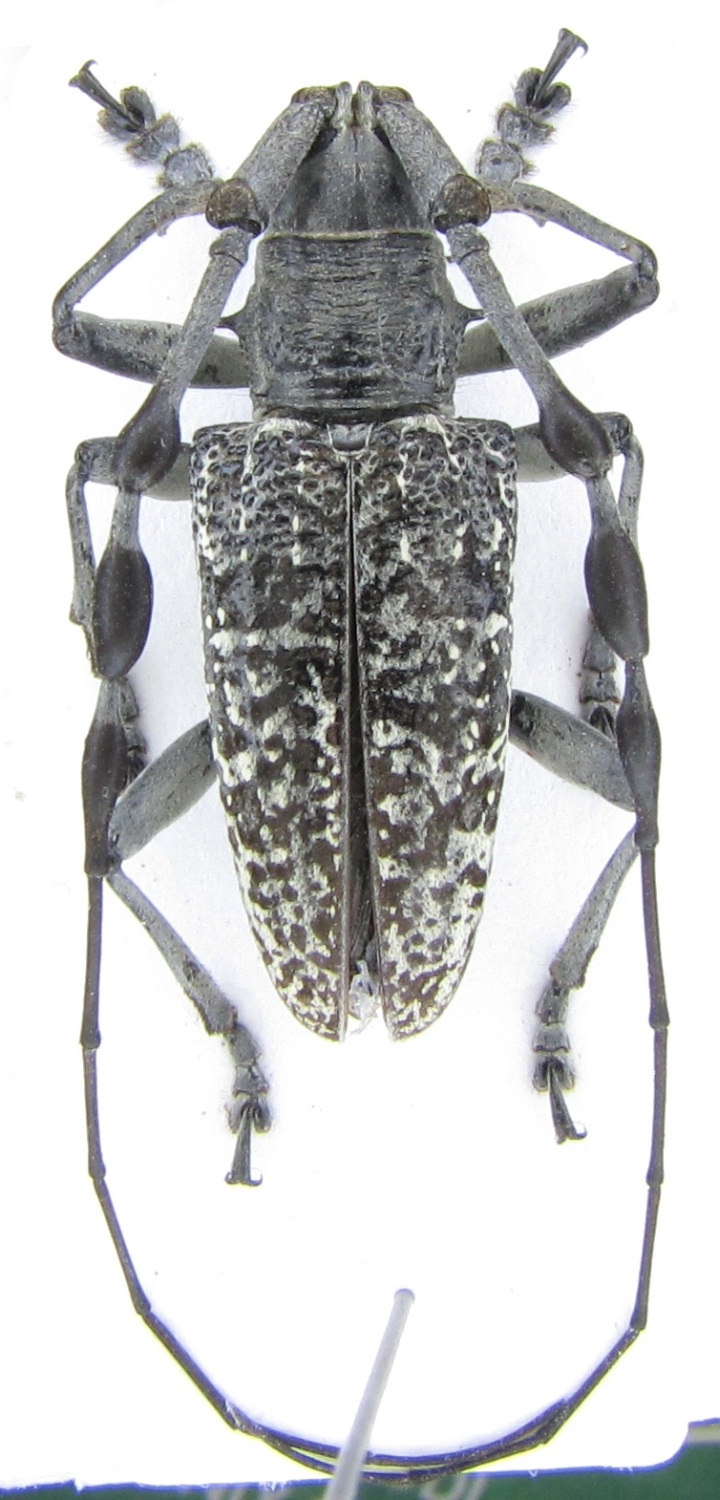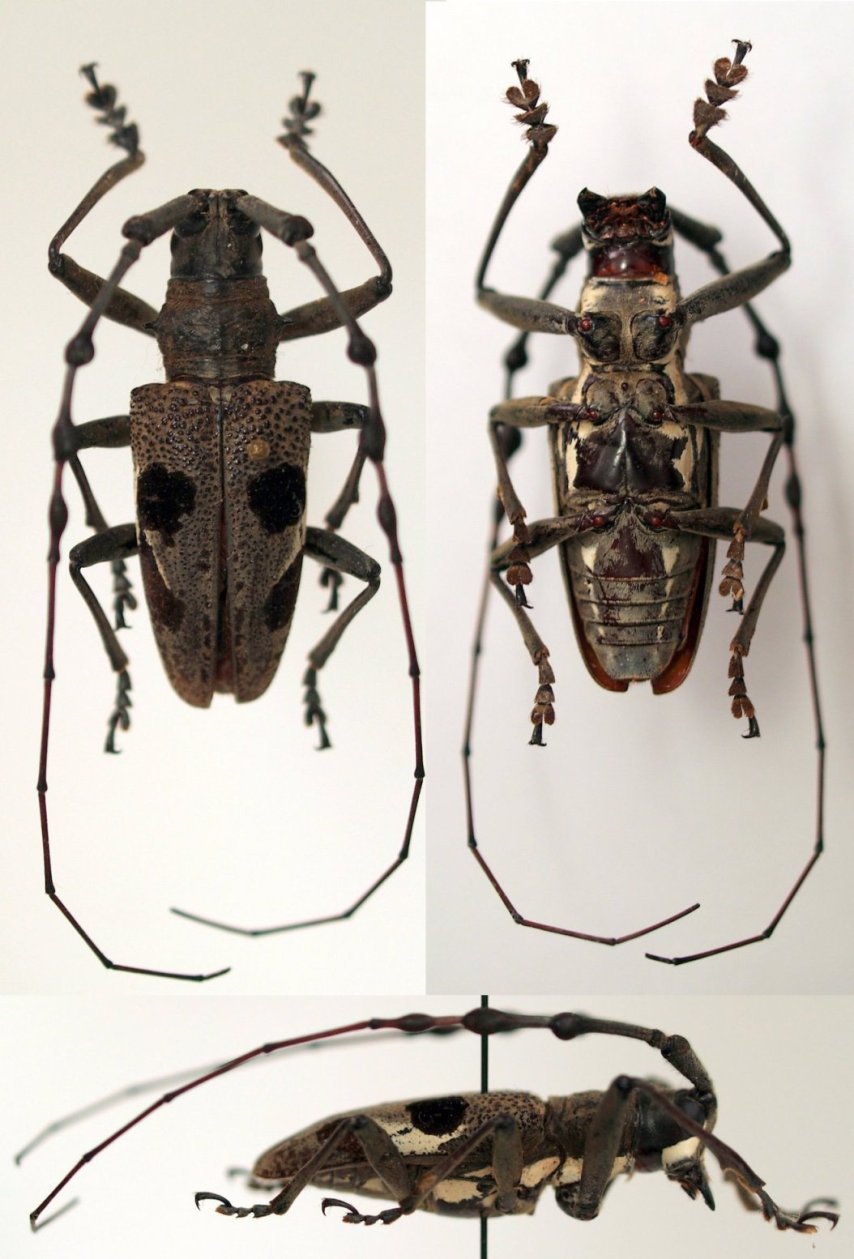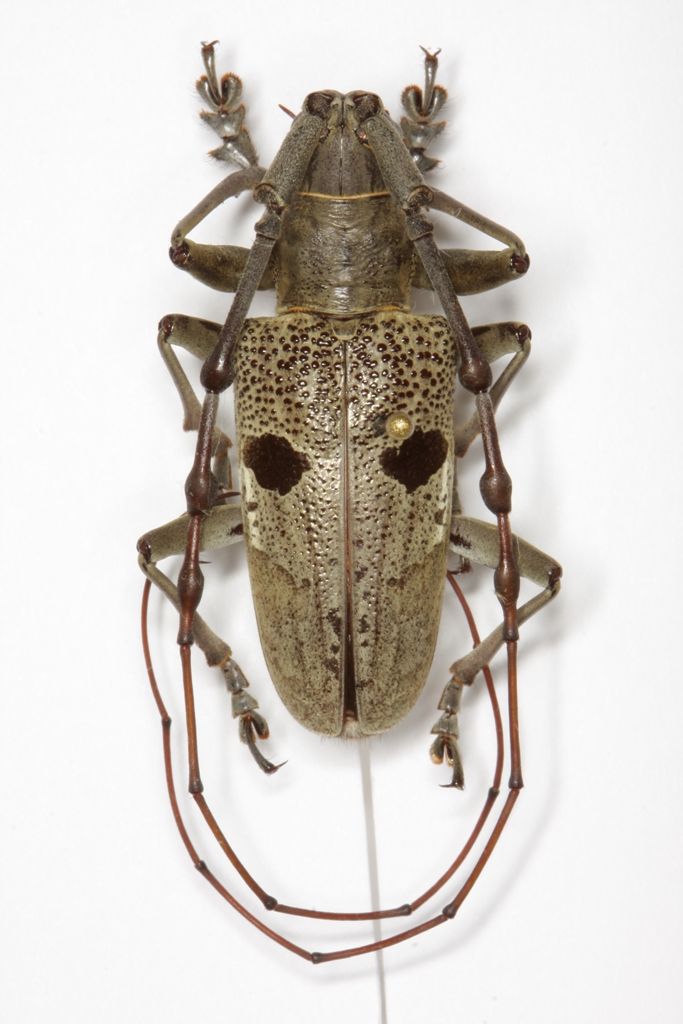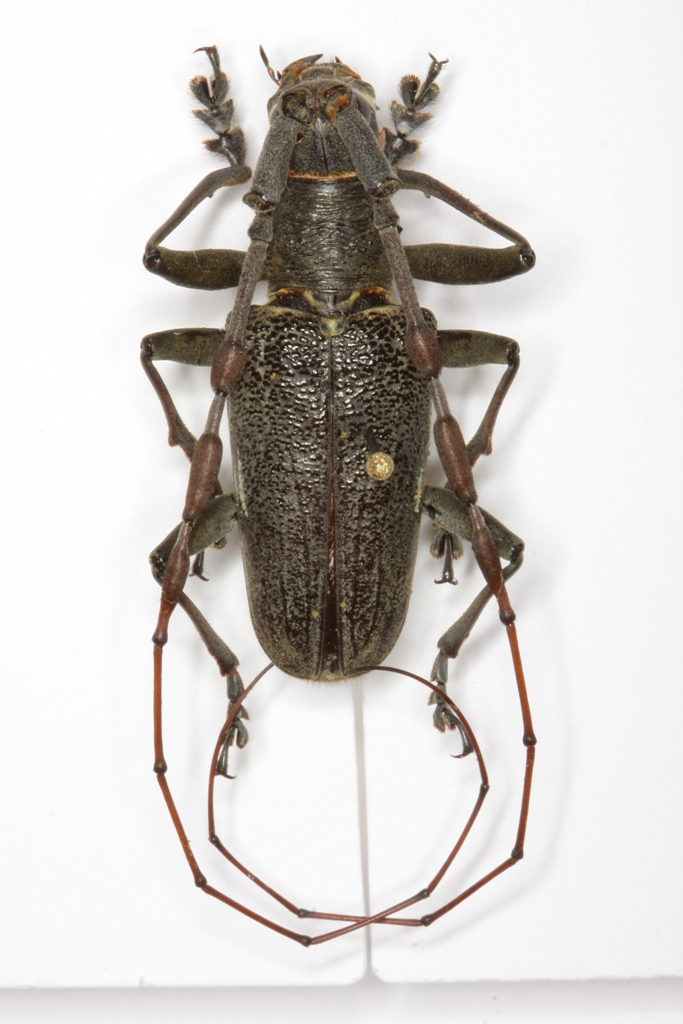| T O P I C R E V I E W |
| Vitali |
Posted - 27/12/2012 : 23:26:25
My first try at new Forum.
A species with very distinctive antennae. Hopefully, not very difficult to identify. West Kalimantan.

501.53 KB |
| 15 L A T E S T R E P L I E S (Newest First) |
| dryobius |
Posted - 02/10/2016 : 13:17:41
I am waiting on a copy of Jiroux's new paper. So, I can't agree or disagree with all of previous opinions.
I also have Triammatus like # 1 from Kalimantan. Based on a few photographs exchanged between Jiroux and myself, I thought they were now T. bayai. This posting now is now very long with photographs of many species, and it is confusing. Of course, this genus has been very confusing for a long time.
Hudepohl's collection undoubtedly is large with many species mis-identfied. He called my specimens of T. bayai as T. tristis. He called my specimens of T. rukasatochini as T. saundersii. I am sure there are many collections with similar problems.
Later, I will post some of my species individually.
|
| Malpertuis |
Posted - 01/10/2016 : 14:20:37
quote:
Originally posted by dryobius
I think Noel Mal's Triammatus is T. tristis (or near). Definitely not T. saundersi
How, it's possible to confirm the determination as T. tritis ?
So we have to correct in Brussels Museum collection. |
| Vitali |
Posted - 26/09/2016 : 13:46:14
Thank you, Jean-Philippe. I am glad my suggestions have been confirmed. |
| dryobius |
Posted - 25/09/2016 : 14:25:09
I have not seen Jiroux's paper yet, but he has sent me photographs and he has graciously paratyped some material from my collection.
I do not totally agree with the subspecies "binigromaculatus" as it seems to occur in essentially the same area as the nominate subspecies. Komiya created the same type of subspecies with one of his Aegolipton's. Sometimes, the markings on elytra are quite variable within a species. |
| jplami |
Posted - 25/09/2016 : 12:24:10
Dans l'ordre des photos, je propose les noms suivants
1 et 9) Triammatus saundersii Chevrolat, 1856
2) Triammatus rukasatochini Jiroux&al., 2016
3 et 4) Triammatus bayai bayai Jiroux &al., 2016 (male et femelle) bien que les formes sont plutôt brunes
5) Triammatus bayai binigromaculatus Jiroux &al., 2016 bien que la forme est brune
6) Triammatus subinermis Breuning, 1955
7) Tiammatus chevrolati Pascoe, 1857
8) Triammatus tristis juheli Jiroux &al., 2016 (femelle)
|
| Vitali |
Posted - 31/12/2012 : 13:23:19
I have not found all original descriptions yet, but I found a book by Pascoe “Longicornia Malayana”, 1864-1869, in which in pages 232-233, he reproduces the descriptions of 3 species: T.saundersii, T. chevrolati and T. tristis. It was interesting to find, that his description of T. saundersii fits well my specimen, but not the photo placed by Dan.
The most important features are copied here:
“…the elytra with small, more or less confluent, spots of black and white ...“
„... a broad pure white line beginning in a small point at the base of the eye, and continued along the sides to the posterior margin of the metasternum...“
„ prothorax finely corrugated, the lateral spine slender towards the apex ...“
„... scutellum subtransverse, truncate posteriorly ...“
„... two pale lines on each side the scutellum, the inner the shorter ...„
„... antennas of the male ashy at the base, the dilated portions and rest of the antennae blackish...“
Beside the other characters, the scutellum is really different in Dan's "T. saundersii". It is almost triangular, not truncated apically and fully pubescent.
The scutellum in my beetle corresponds well to the Pascoe's description. Moreover, a bit above in p. 232 after the genus description, there is a comment concerning an undescribed species with a triangular scutellum.
There is no indication of pubescent bands on the dorsal side in pronotum, as in Dan’s specimen. And finally, one of the most striking differences: look at the very strong preapical depression in pronotum of Dan’s beetle. I guess this is a unique character.
Dan, it seems on the basis of the Pascoe's work, that rather my beetle is T. saundersii, while yours is not. It might be a new species.
|
| Vitali |
Posted - 29/12/2012 : 20:43:33
The length of antennal segments and the shape of their swellings seem to be good diagnostic characters. These make my specimen close to T. saundersii and T. subinermis. The pubescence is very well preserved in my specimen and this allows seeing a striking difference from T. saundersii in the shape and pubescence of scutellum (close to T. subinermis, only margins have dense pubescence). And yet, antennae are slenderer in T. subinermis. I am almost ready to believe this is a new species. |
| dryobius |
Posted - 29/12/2012 : 15:09:33
Vitali, I think you're specimen is not any of the four species that are known to me from Borneo.
Almost every one of my Bornean cerambycids is from Sabah or Sarawak. Borneo is a huge island with many undescribed species, even from Sabah. No one can estimate how many more will be found in southern Borneo.
As I mentioned, tristis & chevrolati may be extreme forms of the same species... but I am not sure of that. But your beetle is not either of those.
Your specimen has the 3rd antennal segment longer than than the 3rd antennal segment of my male T. saundersii. Yes, there are other differences, too. When pubescence on a specimen gets rubbed off, it becomes hard to tell what has happened.
I was told by a colleague that my only specimen of T. subinermis is a very close match to the illustration in Breuning's paper. Maybe sometimes, T. subinermis has more pubescence.
Well, I think all I can say now is that you could have an undescribed species. I have never seen T. brunneus Breuning (type locale: Sumatra) or a photo of it. I would expect it to be "brunneus" in color, however it was described by Breuning which means very little.
I still have 10-15 unidentified / undescribed Monochamini from Sabah. A few are Acalolepta, but there are other genera, too. |
| Vitali |
Posted - 29/12/2012 : 13:30:40
I forgot to mention also a deep groove between antennae in the head. Is this the same in other species? All photos are taken from different angles. |
| Vitali |
Posted - 29/12/2012 : 13:20:39
Dear Dan. Great to meet you here. Thank you and Gerard for the photos of Borneo species.
It seems however that none of them fits my specimen because of the following features (I am not sure how important these are from the diagnostics point of view):
1) The pubescence is almost white, only slightly grayish (the camera is not guilty); I am adding here a lateral view, which shows this even better;
2) The color pattern with 6 white longitudinal lines in the first quarter of elytra is different from all other species;
3) The area of shiny grains is restricted to the first quarter of elytra like in T. chevrolati.
4) Antennae are completely black, practically no shade of brown.
5) The sculpture of pronotum with transverse wrinkles resembles only that of T. subinermis, but other features are different.
Finally, may be an exact locality can help. It is Mount Bawang.

116.28 KB |
| Gerard |
Posted - 29/12/2012 : 00:04:15
Reste a trouver Triammatus brunneus Breuning, 1947 pour avoir toutes les especes décrite de ce genre.  |
| Gerard |
Posted - 28/12/2012 : 23:55:44
Merci Dan
Voici T. chevrolati Pascoe, 1860

147.22 KB
MALAISIE Cameron IV.2005
T.waigeuensis Gilmour, 1950

199.51 KB
INDONESIE Irian Jaya Timika III.1999 |
| dryobius |
Posted - 28/12/2012 : 23:21:39
T. chevrolati

381.28 KB
T. subinermis
What confuses me about Triammatus tristis is that the type locality is Batchian {Batjan}, which is on the other side of Wallace's Line from Borneo. My experience is that there are only a few species which occur on both sides of this line. Also, as I mentioned above, sometimes there are forms of T. chevrolati or T. tristis which look a little like some kind of hybrid.

373.51 KB |
| dryobius |
Posted - 28/12/2012 : 23:00:26
I tried to post 2 more pics (chevrolati & subinermis) but something is blocking me ... hmmm |
| dryobius |
Posted - 28/12/2012 : 22:58:48
T. chevrolati
|
|
|


